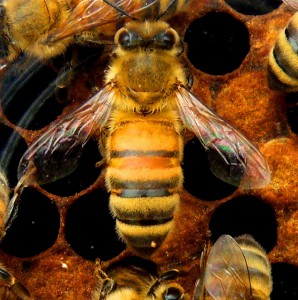Honeybee population decline effects on crops
The mass deaths of bees associated with colony collapse disorder (CCD) may prove disastrous for farmers. This pollinator population decline has been accelerating in recent years, leaving many farmers who raise crops dependent on bees—such as apples, oranges, almonds, cherries, blueberries, avocados, cucumbers, and pumpkins--struggling. The honeybee disappearance appears to be primarily due to pesticides. These pesticides can kill bees outright, make them disoriented and unable to locate food sources, and make them more susceptible to other threats such as Varroa mites and diseases. Neonicotinoids, a new class of pesticides, are especially threatening to bees, and have been found to create colony collapse symptoms when bees were fed neonicotinoid-treated corn syrup. Researchers are working to resolve CCD, but without a reduction in the use of pesticides, there may not be enough honeybees to meet the pollination demands for crops in the future.


